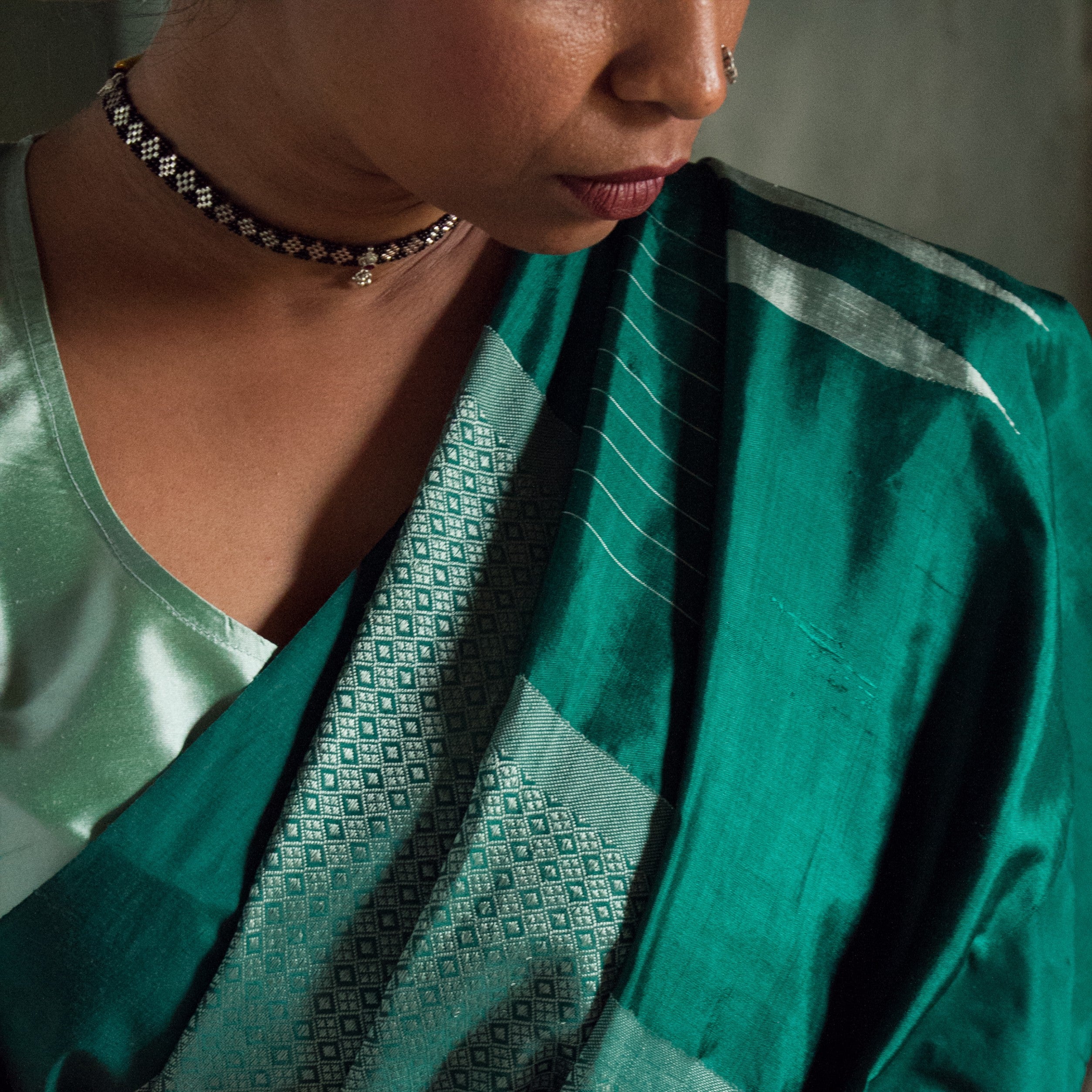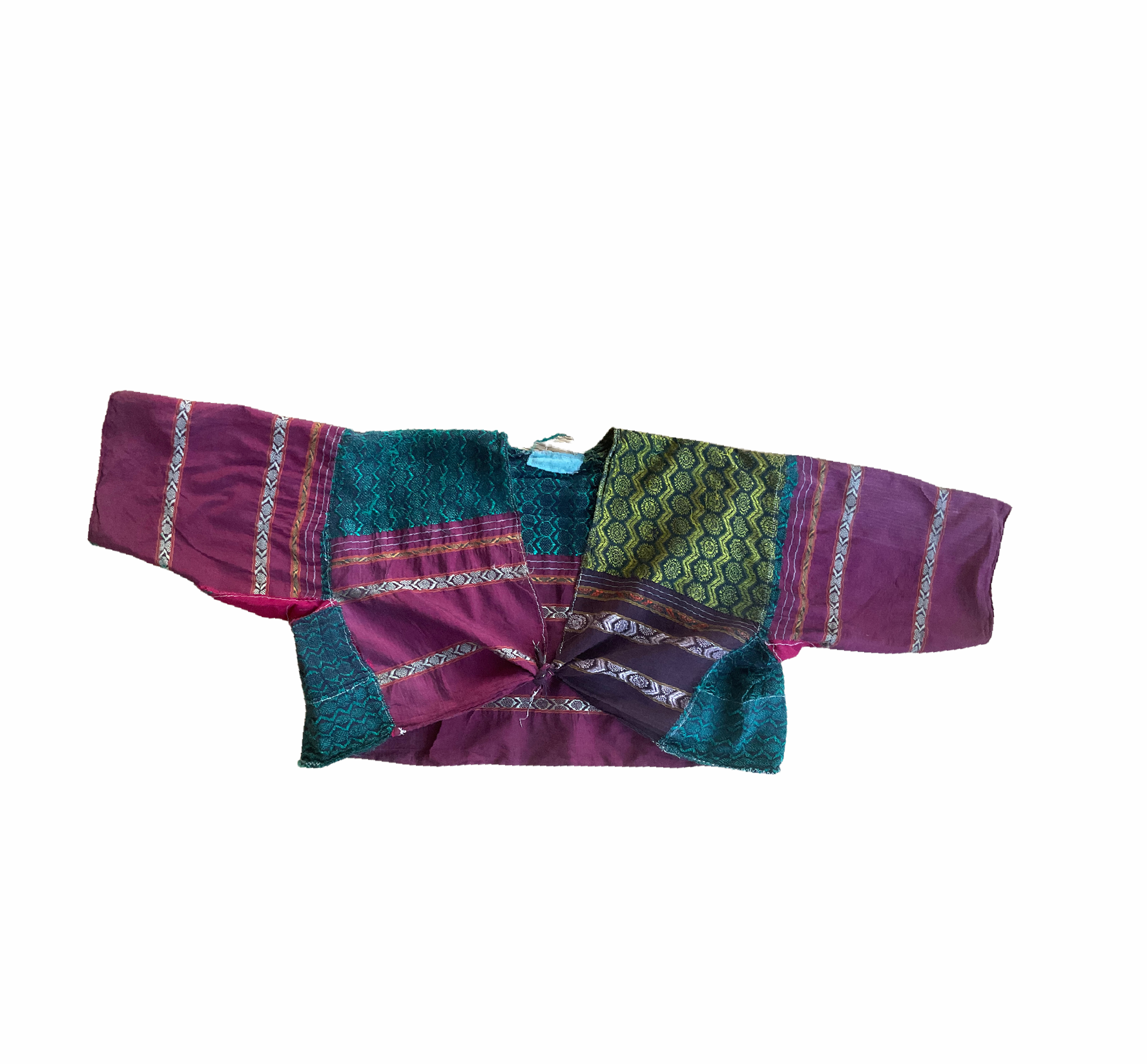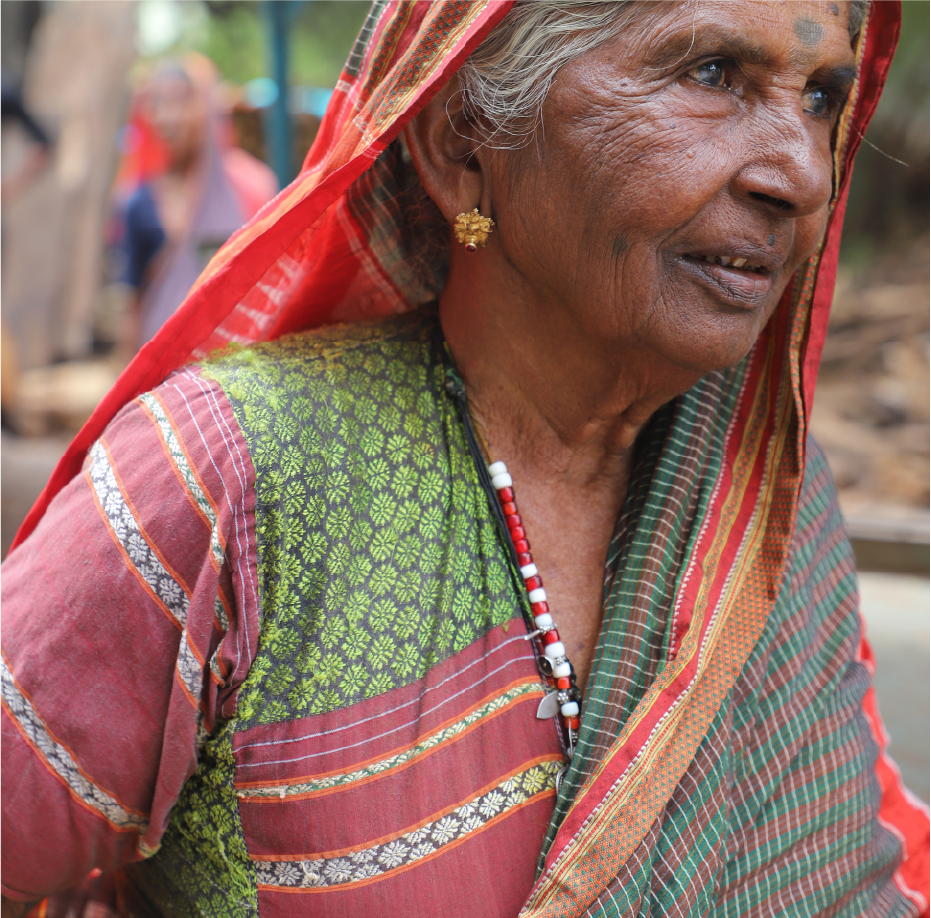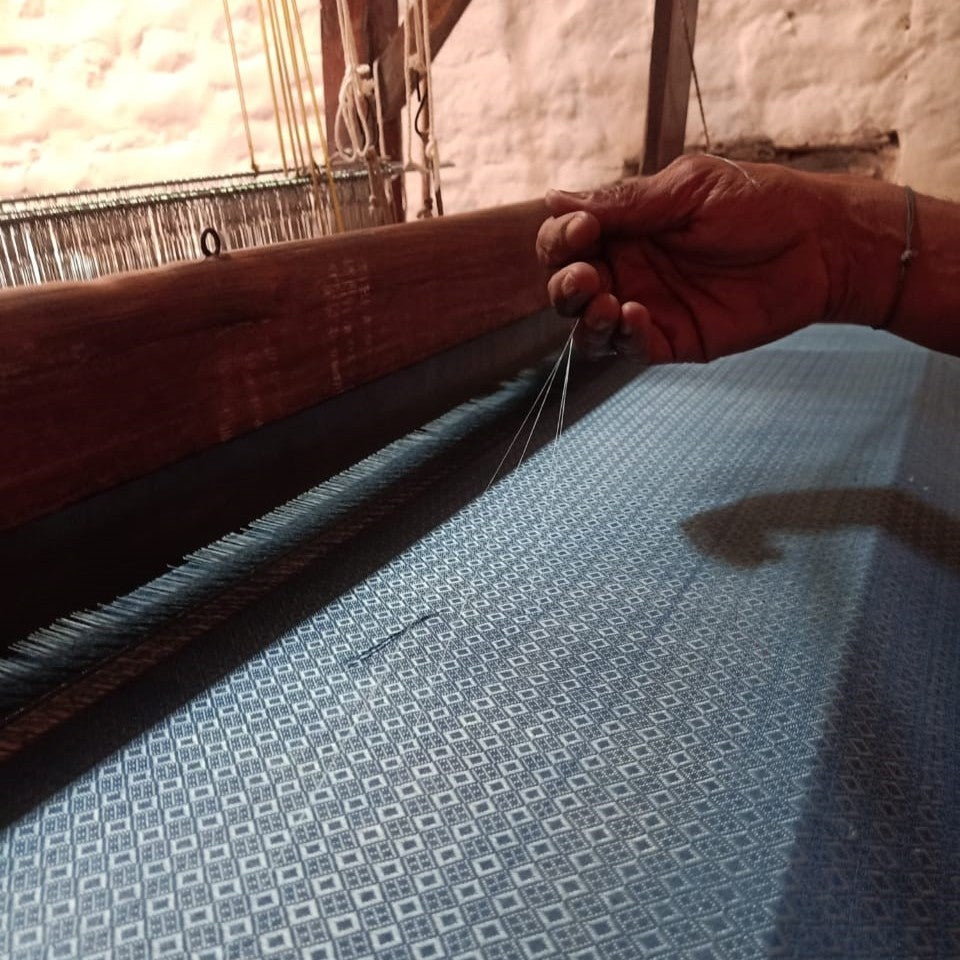
Khana
Khana, a traditional fabric from North Karnataka is known for its intricate silk motifs inspired by the local culture. Woven in mere 30 inches width and optimally sewn into a bodice called Kubsa, it was always paired with an ilkal saree.
At Kubsa, we take pride in being the pioneers of transforming these 30 inches width fabric into a saree, keeping the authenticity of the craft at its center.

Kubsa's journey began in 2019, inspired by the vision of Geeta Patil, a Textile Designer, to work closely with handloom artisans from northern Karnataka, driving change and development through design at the grassroots level. Northern Karnataka, a region with a rich textile heritage, once boasted a diverse array of traditional weaves that have sadly faded due to the rise of power looms. In the past, nearly every household in the region had at least two looms, but as industrialization advanced and power looms & synthetic materials took over, handlooms became scarce, leaving a once-thriving craft in decline. Eventually the market became flooded with chamka (polyester), further devaluing the richness and authenticity of Khana (Khunn, khun) textiles but traditionally only natural fibers like cotton and silk were used .

Khana (Khunn, khun), a traditional blouse fabric from North Karnataka, has been granted a Geographical Indication (GI) tag. Woven in a 30" width, it is known for its extra warp silk motifs inspired by local flora, fauna, deities, and daily life. Typically crafted in bright colors on dark indigo warp with maroon borders, it was cherished by women in North Karnataka and South Maharashtra, often paired with Ilkal sarees. This fabric was skillfully sewn into a bodice called ‘Kubsa’.
Though Traditionally Khana (khunn) was woven only in a 30-inch width, Kubsa's intervention transformed this small width fabric into 48” width sarees, and reintroduced the natural fibers. The weft of the khana (khunn) fabric was originally dyed with natural indigo, and Kubsa revived this tradition, introducing additional natural dyes into the cluster. It is said that khana was also woven in pure cotton x cotton which in the last 5 decades has not been seen. Kubsa revived this cotton-by-cotton Khana (khunn) weave and brought it back to life in the form of beautiful cotton Khana sarees.

The Khana cluster has been gaining increased attention over time, thanks to Kubsa's efforts in paving the way for others to explore this previously uncharted and lesser-known craft. Kubsa introduced incentives and bonuses in a region where such benefits were unheard of for weavers. This initiative not only transformed the lives of the weavers directly working with Kubsa but also created a ripple effect amongst the other weavers of the region. It empowered other weavers to advocate for fair wages and improved working conditions from master weavers and traders in the region.




